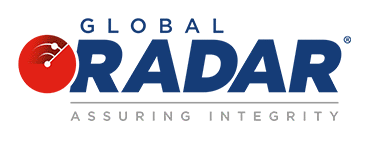Those of us operating in the financial sector today have become more familiar now than perhaps ever before with the proverbial hurdles of regulatory compliance, hurdles that have continued to grow higher and higher with the passing of each and every distinct piece of domestic or international legislation we as financial professionals must analyze and subsequently adjust to. As the finance sphere continues the movement towards increasing financial security and decreasing international crime, financial institutions (FI’s) have placed greater emphasis on, and contributed more time and financial resources to, compliance with both current and emerging regulations and mitigating potential risks, as well as ensuring that their processes meet the latest demands brought forth by the exponential growth of digital finance and technological platforms that have significantly altered the way money is moved.
At the heart of regulatory compliance in the United States is the Office of the Comptroller of the Currency’s Bank Secrecy Act (BSA), which has required FI’s to establish potent anti-money laundering (AML) programs while setting strict recordkeeping and reporting requirements for national banks, federal savings associations, federal branches, as well agencies of foreign banks in order to detect and prevent various forms of financial crime. The filing of suspicious activity reports (SAR’s) has effectively become the cornerstone of today’s BSA reporting system, as these documents have been deemed one of the most crucial tools that United States federal authorities have in combatting terrorism, money laundering, corruption and other forms of crime with potentially far-reaching implications on global stability and security. U.S. banks, credit unions, brokers, casinos, and insurance companies are required by law to file SAR’s when confronting questionable transactions. This includes cases where there are:
- Criminal violations involving insider abuse in any amount.6
- Criminal violations aggregating $5,000 or more when a suspect can be identified.6
- Criminal violations aggregating $25,000 or more regardless of a potential suspect.6
- Transactions conducted or attempted by, at, or through the bank (or an affiliate) and aggregating $5,000 or more, if the bank or affiliate knows, suspects, or has reason to suspect that the transaction:
- May involve potential money laundering or other illegal activity (e.g., terrorism financing).6
- Is designed to evade the BSA or its implementing regulations.6
- Has no business or apparent lawful purpose or is not the type of transaction that the particular customer would normally be expected to engage in, and the bank knows of no reasonable explanation for the transaction after examining the available facts, including the background and possible purpose of the transaction.6
Given the fact that there these documents generally require the filer to input a fair amount of information while meeting stringent filing deadlines, this in addition to completing internal log entries that are often kept to monitor these procedures, the task of SAR filing has grown into one of the more daunting and arguably monotonous aspects of this occupation. Financial institutions of all sizes have lobbied for a higher reporting threshold in the U.S. for several years, stating that the current thresholds have led to the mass filings of mostly unnecessary reports while also watering down the content and diminishing the overall value of these apparatuses to law enforcement officials. There is also a profound amount of speculation regarding whether or not the thousands of reports being completed by banks each year are even being reviewed by FinCEN officials, AML investigators, and/or law enforcement agencies, let alone being utilized in the facilitation of criminal investigations. Perhaps the most troubling part of the current SAR trend however is that these responsibilities tend to fall on capable individuals that could be using their knowledge and skillset better elsewhere. This has at least in part led to the negative perception held by financial officers about this practice, and is widely considered to be one of the driving forces behind yet another disturbing trend in this industry – experienced compliance officials being driven away from the profession altogether.
The rare advent of some good news has recently come for those operating in banks and other financial institutions across the United States however, as long-awaited reform legislation that could have a lasting effect on this industry was presented in the House of Representatives last Tuesday. The article “Relief may be in reach for bankers fed up with SARs”, cited in BSA News Now on June 13th, discusses the more notable details of what has been coined The Counter-Terrorism and Illicit Finance Act. With previous legislation viewed as severely outdated, the proposed legislation, “sponsored by Reps. Blaine Luetkemeyer, R-Mo., and Steve Pearce, R-N.M., would reportedly triple the dollar threshold for filing currency transaction reports, to $30,000, and double it for suspicious activity reports, to $10,000”, an unprecedented move as the current thresholds have remained as is since their establishment by Congress in 1970 and 1996, respectively.4 SAR filings reaching record-breaking levels in the United States last year (a total of 916,000 reports were filed in 2017), and financial institutions comprehensively on pace to eclipse that number by an additional 20,000 reports, the bill cannot come soon enough for compliance officers across the country. “Our bill streamlines the Bank Secrecy Act’s framework, bringing our laws into the 21st century,” stated Luetkemeyer. “This legislation is the first step in making the anti-money laundering regulatory regime work by modernizing the woefully outdated laws and streamlining regulations to increase effectiveness.”4 The Counter-Terrorism bill is not stopping at updating dollar thresholds for SAR filing however, as it will also aim to make the reporting process more effective altogether. If instituted, the Act will reportedly “require the Treasury Department to encourage the use of technology and to conduct a review to identify more reforms that could reduce reporting burdens and ensure the information reported is of ‘a high degree of usefulness’ to law enforcement.”4
If the bill, which is expected to be placed on the fast track, is passed, compliance officials across the United States may breathe a collective sigh of relief, although the changes will not significantly impact current processes utilized by FI’s in the monitoring and identification of suspicious activity.

